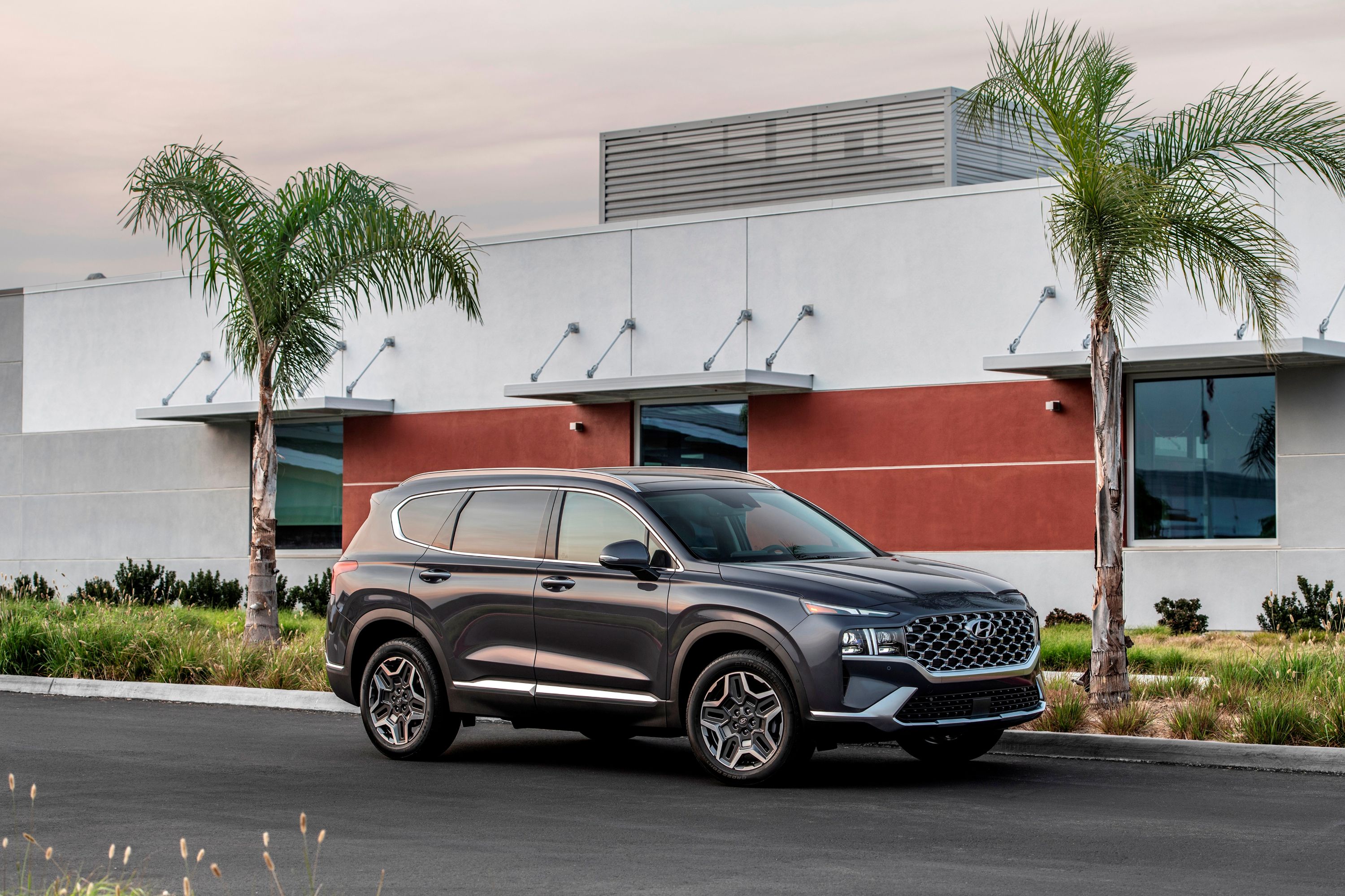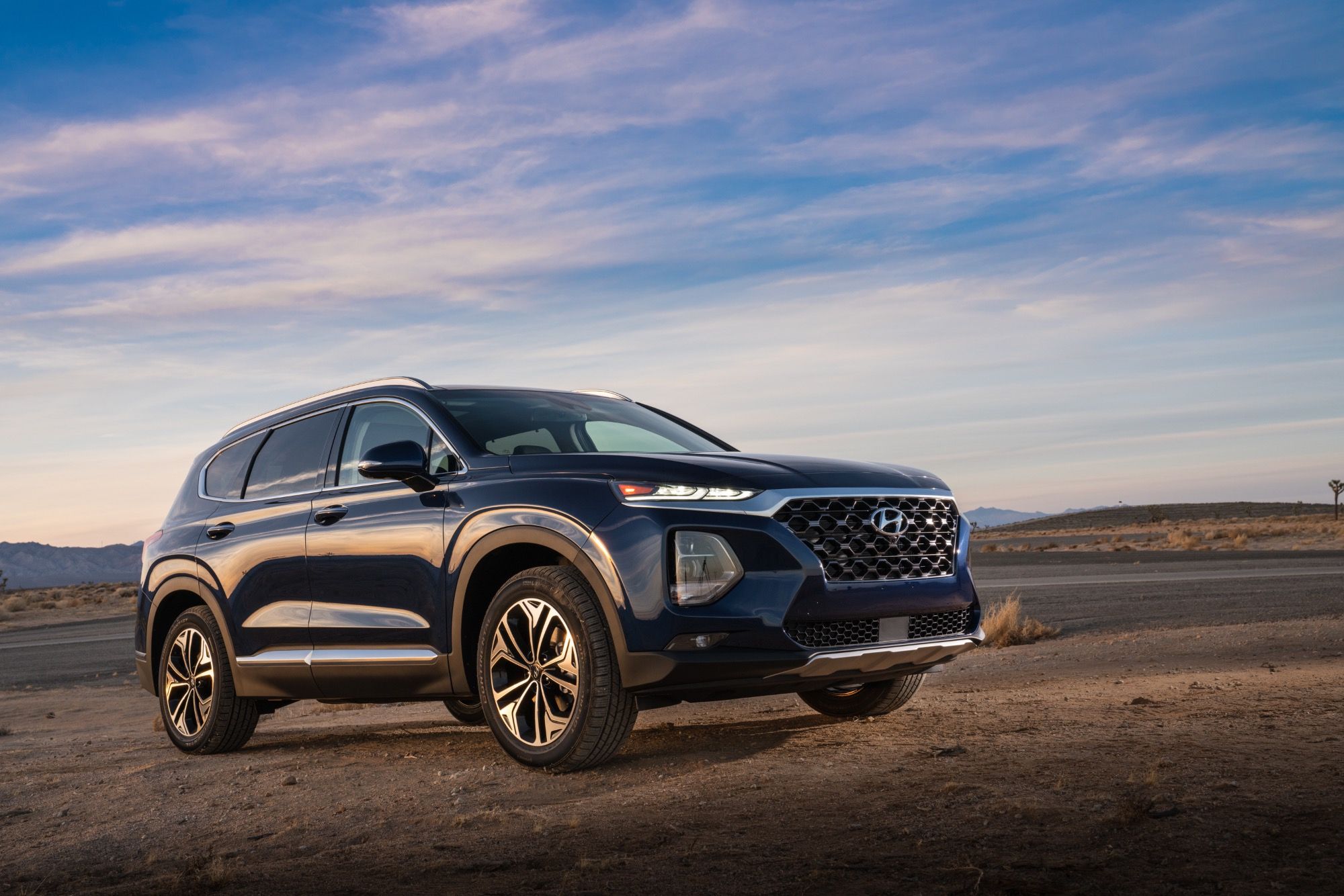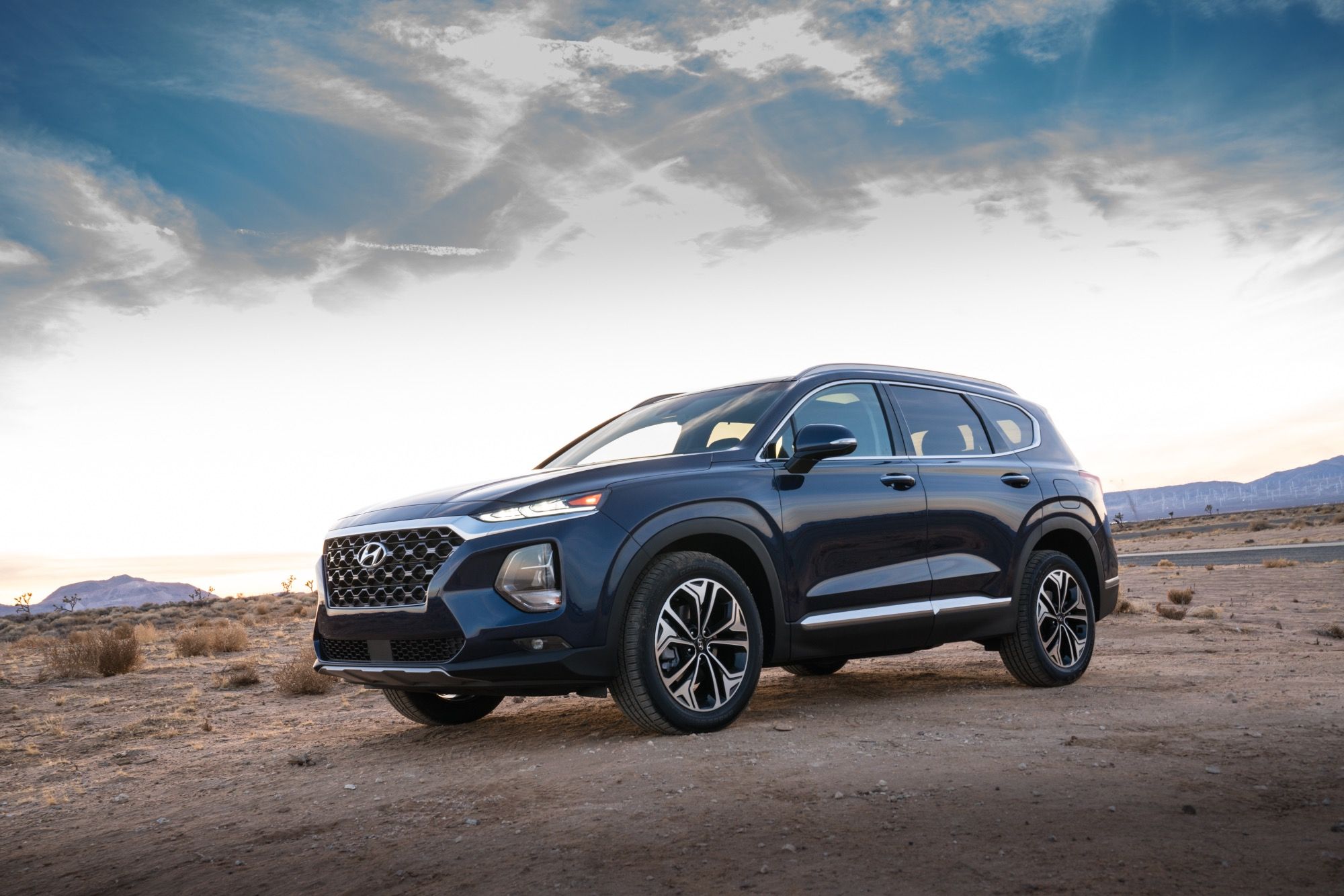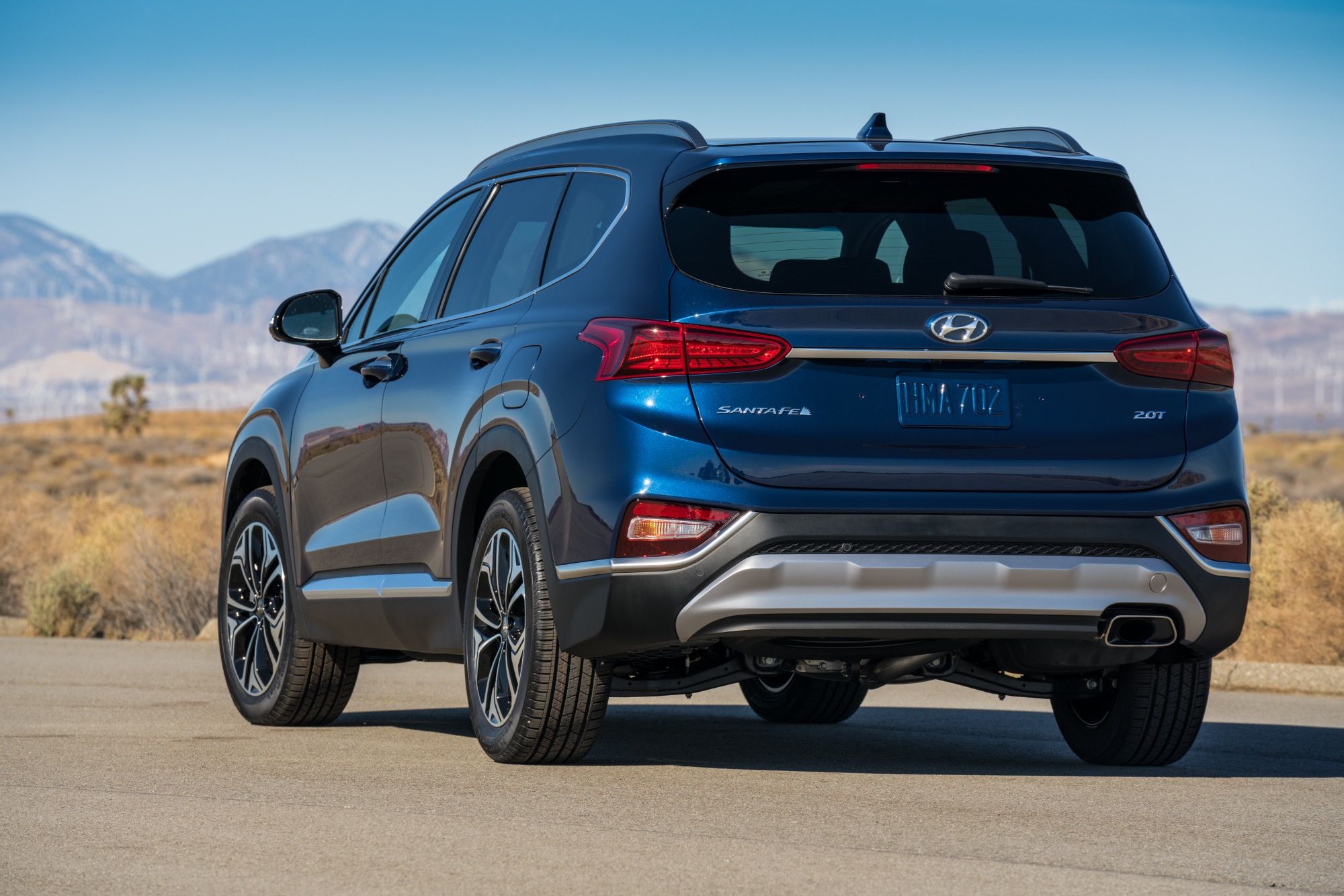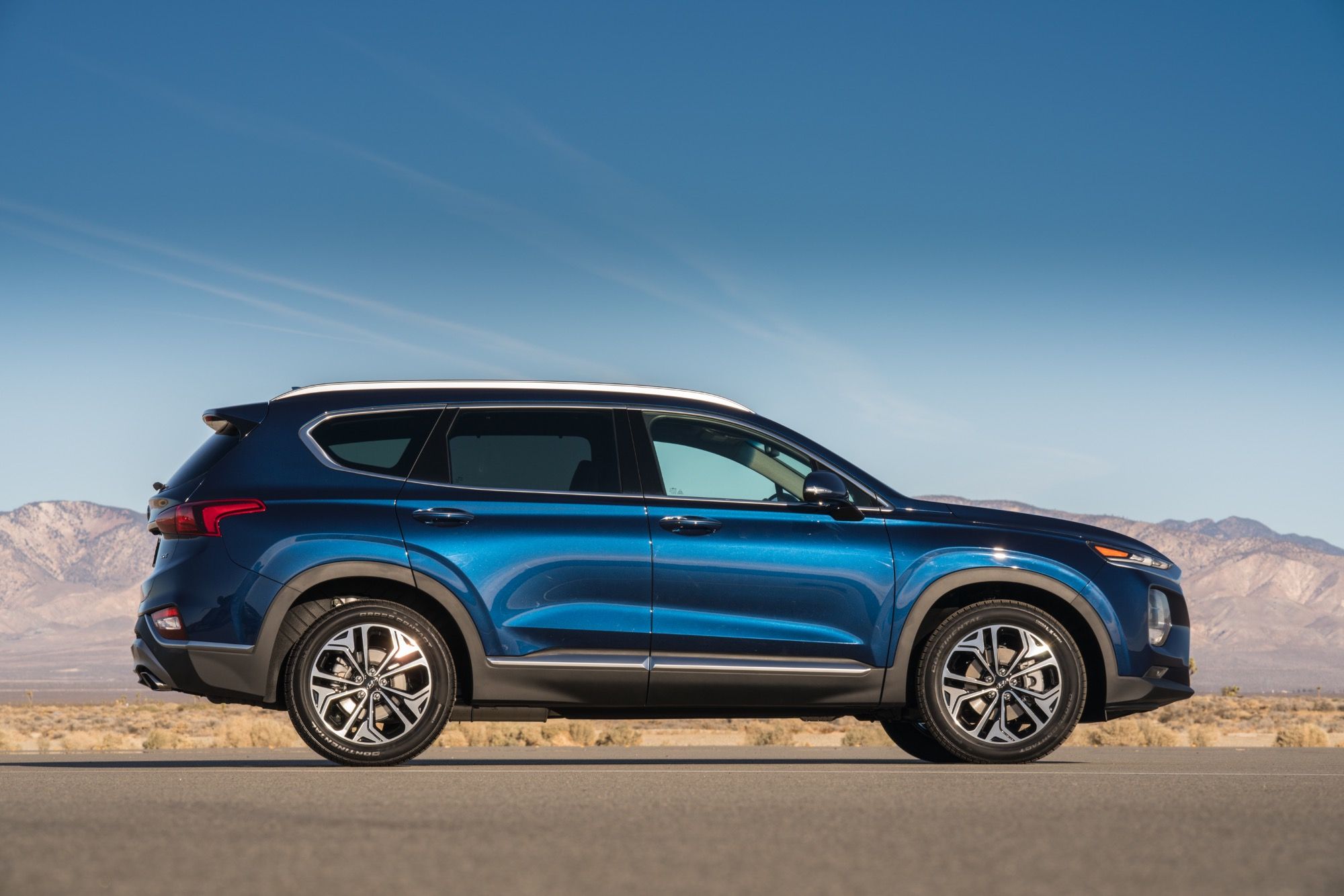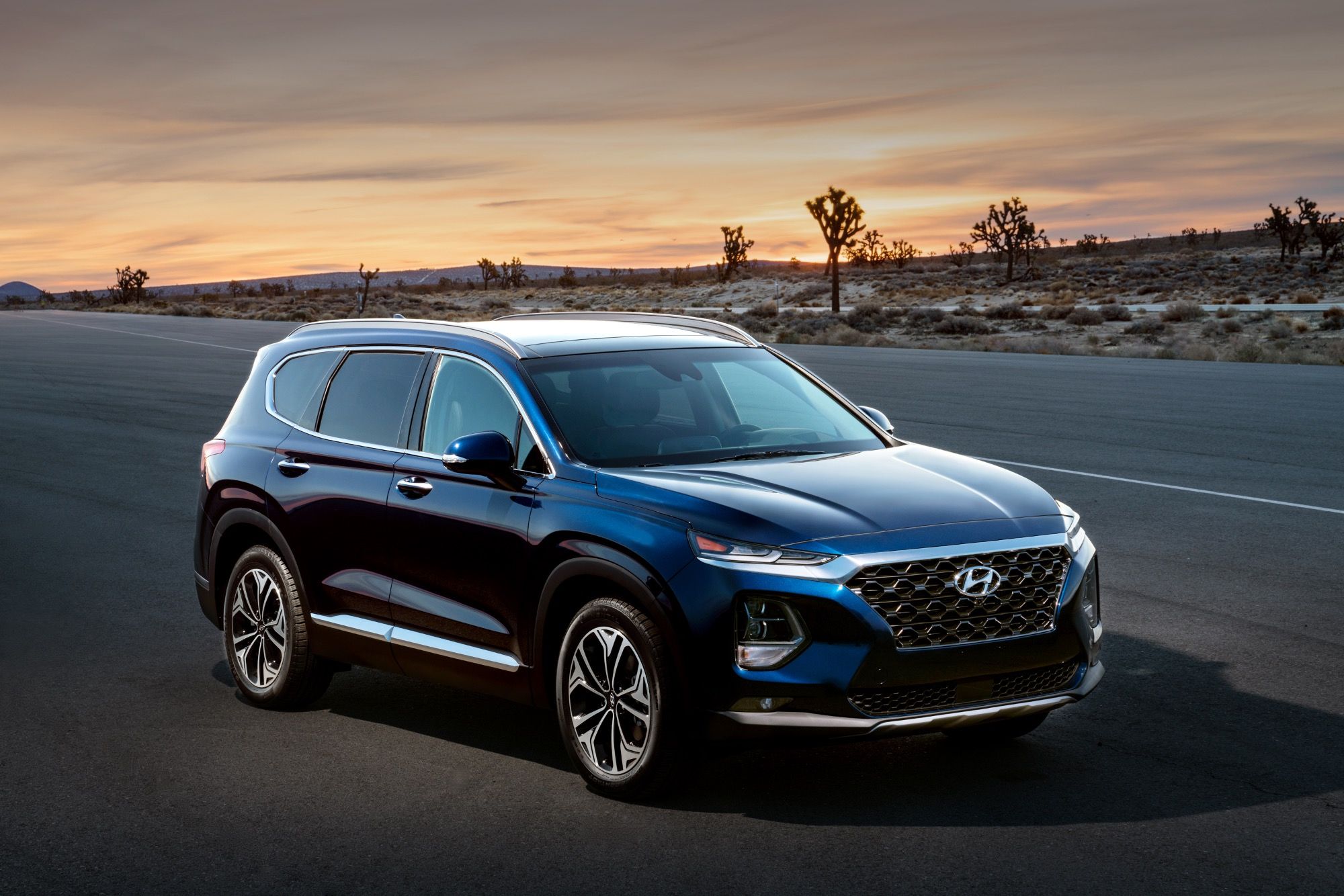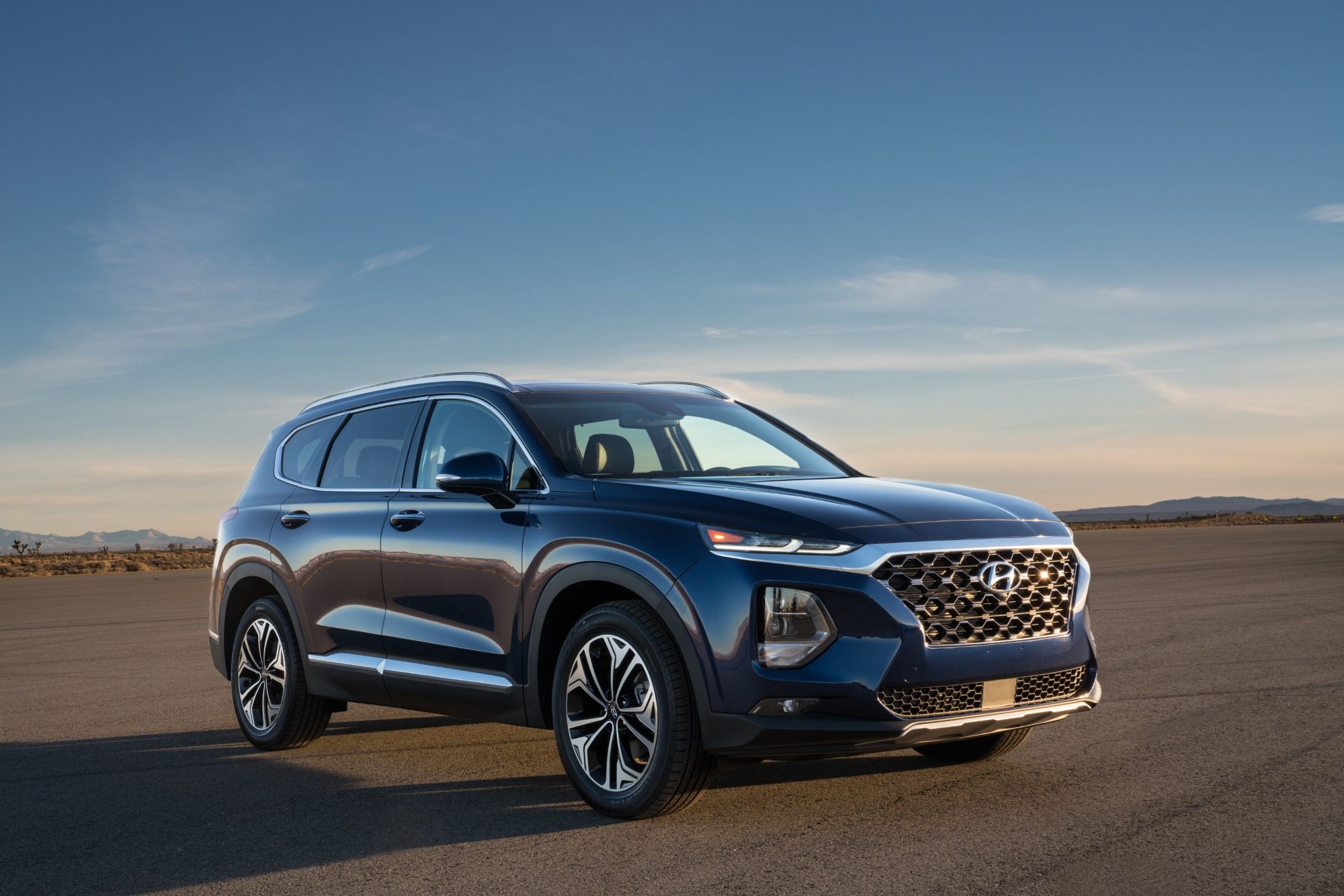2019 Hyundai Santa Fe First Drive Review: Japan's Worst Nightmare Now Wears A Hyundai Badge
It's tough being the underdog. Just ask Rocky before the Apollo Creed fight or Toyota before the mid 60s. It's a time in a person's or company's career when inertia and the dissenting forces of resistance make each step forward a grueling one. Where working harder and smarter, habitually staying in the office past closing time and optimizing every training mechanism or production procedure for perfection, is never enough. And then one day it all pays off. Removing the blinders of white-knuckled focus, that person or corporate entity finds itself somewhere near the summit of success and can afford a small celebration. Hyundai's invitation to Park City, Utah, to drive the 2019 Santa Fe (previously called the Santa Fe Sport), could have been construed as just another first drive event.
But one could almost feel the celebration in the air, radiating from the corner where the Hyundai team sat, over the fact that the Santa Fe proves that Hyundai has survived a multi-generational onslaught from competition and become a respected automaker-no longer just the barrel's bottom budget pick. Before we got a chance to drive the redesigned Santa Fe, Hyundai sent a short video clip to every journalist in attendance, highlighting the crossover's technical features.
The video mentioned nothing out of the ordinary. It touched on the standard eight-speed automatic, the engine options-a 2.0-liter turbo-four making 235 ponies and a 2.4-liter inline four-cylinder pushing out 185 horsepower as well as a diesel debuting sometime in the near future-and an optional predictive torque-vectoring AWD system called HTRAC that can be had on all trims regardless of the chosen engine. It also and made a brief mention of the 8 safety features installed as standard including a forward collision assist system that applies the brakes in emergencies, blind spot collision avoidance assist, lane keeping assist, rear cross-traffic avoidance assist, safe exit assist to stop occupants from opening doors when parked against a curb with oncoming cars in the next lane, high beam assist, smart cruise control with stop and go, and a driver attention warning.
Nothing in this list is something the world hasn't seen before, but among the many things the Santa Fe does well is to prove that a car is much more than the sum of its parts and features. They are the sum of the care, passion, a lust for quality, proclivity for value, and the spirit of competition behind them.
It doesn't take a video to prove the 2019 Santa Fe has all that, you can tell just by looking at the thing. The cascading grille and those thin LED slits sandwiched between front fenders and a flattened hammerhead hood are proof that Hyundai is approaching the game with the eyes of an underdog who's quickly becoming the incumbent.
Replacing the third-generation Santa Fe Sport that debuted in 2013 (the larger 7-seat SUV that used to be called the Santa Fe is now called the Santa Fe XL), the 2019 Santa Fe guns for the hearts and minds of customers who viewed the previous crossover's aesthetic as too soft and too plain. Designers emboldened the 2019 model by pushing the headlights sitting below the thin daytime running lights apart, allowing the grille to grow to intimidating proportions. With a lower and flatter belt line providing greater visibility for cabin occupants while squaring off the greenhouse's side profile, the Santa Fe's frame appears to sit over the wheels as if it were on the prowl-like a jockey waiting for the starter gun to go off rather than a minivan with bad posture.
Bulged wheel arches and abrupt right angles at the front and rear help the Santa Fe ditch the gradual slopes that made the pervious model look timid. All the design team had to do at the rear was slim the taillights, tie them together with a strip of chrome similar to how the daytime running lights up front are joined, and add chrome accents to the body.
The changes aren't just visual. Wheelbase has been widened by 2.6-inches and total length is up 2.8-inches while height and width have increased by 0.6-inches and 0.4-inches, respectively. Having hydrated ourselves with the copious amounts of water it takes to keep a body functioning at 8,100 feet above sea level, we stepped outside to a windy Park City morning and into one of the dozen Santa Fes that Hyundai let us choose from.
Inside, the cabin greets with the glamour of fine materials and the fresh breath of a clean ergonomic layout. Though our hands could hardly stop touching the soft and expensive-feeling beige headliner, they eventually found their way to the starter button of our Quartz White Santa Fe Ultimate. The engine came to life, an event we only learned about by watching for the tachometer blip.
The first thing to notice about the Santa Fe, aside from the plush, feature-laden interior that feels like it broke out of the Genesis department's design studio and hitched a ride on one of the Santa Fes in the parking lot, is the noise level inside the cabin. Or rather, the lack of it. Bounding around Utah's dirt-covered backroads and passing through small towns where residents buy RVs as room additions to their houses rather than as transportation for their golden years, the Santa Fe keeps passengers from getting jostled by the hostilities of the outside world. Credit for making the Santa Fe feel like a luxury car should go to the engineering team. By sealing holes, utilizing acoustic glass, and adding extra sound-absorbing material, they managed to give the Santa Fe an eerily quiet cabin.
The ride is smooth too, an attribute brought about by stiffening the chassis and reducing weight through the use of high-strength steel. Rounding out the package is a thoroughly reworked suspension that increases comfort through new bushings and a taller shock absorbers (a trick enabled by mounting them upright as opposed to having them sit at an angle like in the Santa Fe Sport).
Trying to break grip was near impossible on the road and a challenge in the dirt because of HTRAC's ability to prevent slipping wheels rather than just react to them. The system is versatile as it is, reserving the right to shift power around to each of the four wheels and sending as much as 50% of the engine's torque to the rear if necessary. But rather than wait for a wheel to slip, HTRAC tries to predict when it will happen by plugging over 50 signal inputs into an algorithm that then returns its best guess as to when and where a loss of traction will occur.
At that point, HTRAC adjusts torque so the Santa Fe keep clawing the road with assurance. The drive route Hyundai selected for us involved crossing mountain ranges, both paved and unpaved. When going up a steep road, we found it best to get out of Comfort mode and into Sport (or just wait for Hyundai's Smart mode to determine that aggression is what you want out of the powertrain). Off-road climbing is different, requiring the rear differential to be locked, which turnis the Santa Fe into a willing and capable conquer of bad lands.
Trips back down the mountain proved to be just as fun thanks to a revised steering rack. Turning off the automatic steering assist and taking a more liberal approach to speed limits reveals a chassis that enjoys play and would be more engaging if the suspension weren't geared towards lulling infants to sleep. Speaking of infants, Hyundai thought of them during the Santa Fe's redesign, too.
Available for SEL Plus trims and up is a new form of rear-seat alert system that could save lives, both human and animal. A watchful ultrasonic sensor mounted over the rear seats scans for movement and if it detects some once the driver has left the vehicle, it'll sound the alarm and send a Blue Link alert to a connected driver's smartphone.
As with the rest of the Hyundai lineup, choosing options for the Santa Fe involves picking a trim level that includes the desired features rather than ticking off boxes on a list. Though the base SE starts at $26,480 including destination, the Santa Fe can be had in four other trim levels including SEL, SEL Plus, Limited, and the range-topping Ultimate trim that goes for $36,430 including destination.
The price ceiling comes in at $39,780 including destination for those who opt for a Santa Fe Ultimate and equip it with the $1,650 2.0-liter turbo (only available for Limited and Ultimate trims) and $1,700 HTRAC system.
This, of course, means you get the whole enchilada: a panoramic sunroof, two-tone leather seating surfaces, an 8-inch touchscreen infotainment system with a navigation system (though Apple CarPlay and Android Auto comes standard across the entire lineup if you'd rather just use your favorite mapping app), rain-sensing wipers, a heads-up display, surround view monitor system, a wireless charging pad, LED fog lights, dual zone climate control, ventilated front seats (seat heat comes standard on all trims except SL), an 8-way adjustable driver's seat, four USB ports, and quite a bit more. The array of extras loaded onto the Santa Fe is truly dizzying.
In the past, bloated standard feature lists and unbeatable warranty policies were how Hyundai stood out from the competition and made headway into the US market, but that kind of knockout value proposition is no longer necessary, as the 2019 Santa Fe goes to show. Hyundai has been in the big leagues for some time now, putting up a good fight across many segments but always giving the W to Toyota or Honda.
The 2019 Santa Fe is something else entirely-cut from the same cloth but stitched to such high standards of refinement that reverse sticker shock threatens to become a real thing. The fact that Hyundai made it luxury car good and still kept the same focus on building a machine with a high value proposition doesn't necessarily spell out Japan's death knell, if such a thing will ever it happen. It does, however, prove that Korea has what it takes to challenge its island neighbor with the equal amounts of ferocity and intensity and possibly even win.
Unfortunately, the crown tends to go to the best seller, and public perception will likely prevent the Santa Fe from unseating Honda and Nissan as the segment's leaders. But like just like drivers of the Mazda CX-5, those smart enough to shop around will soon encounter the Hyundai dealership, where they will realize that the opinions of sheeple aren't always correct.

